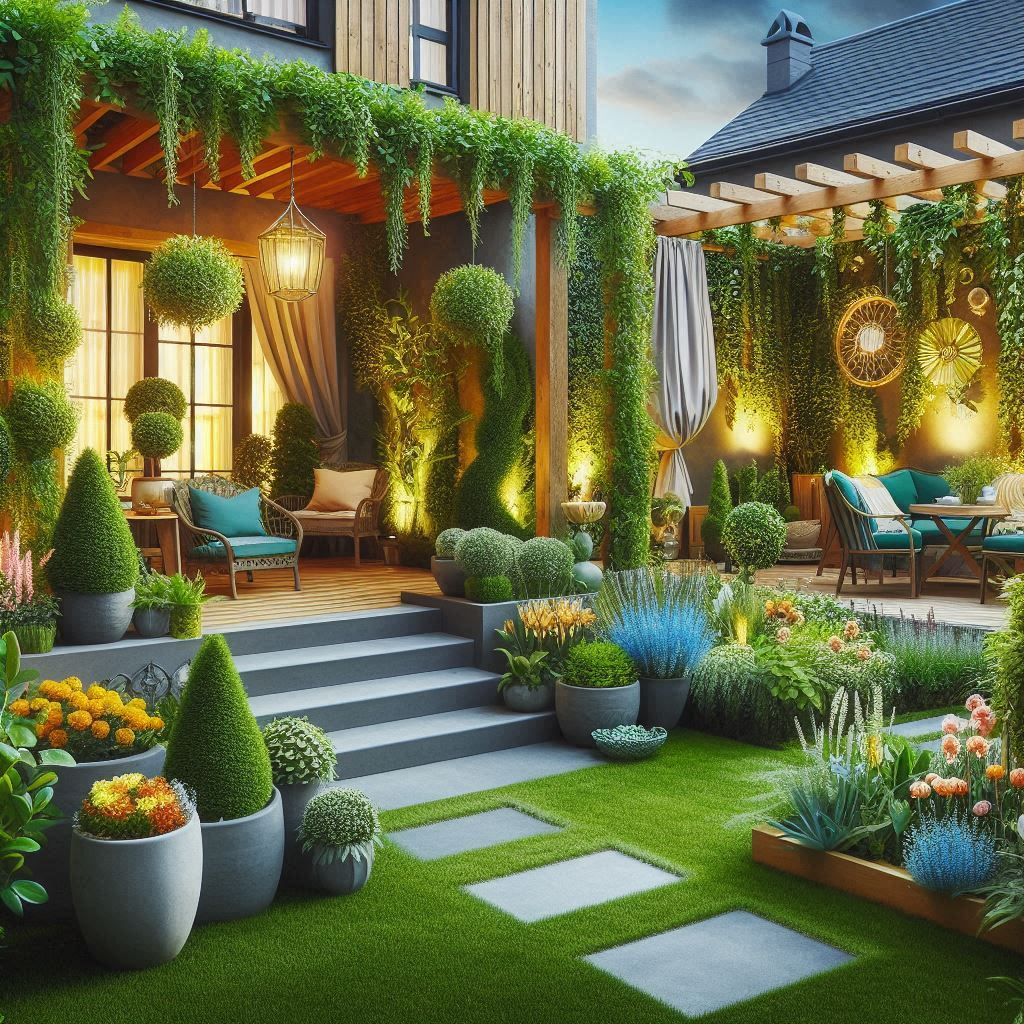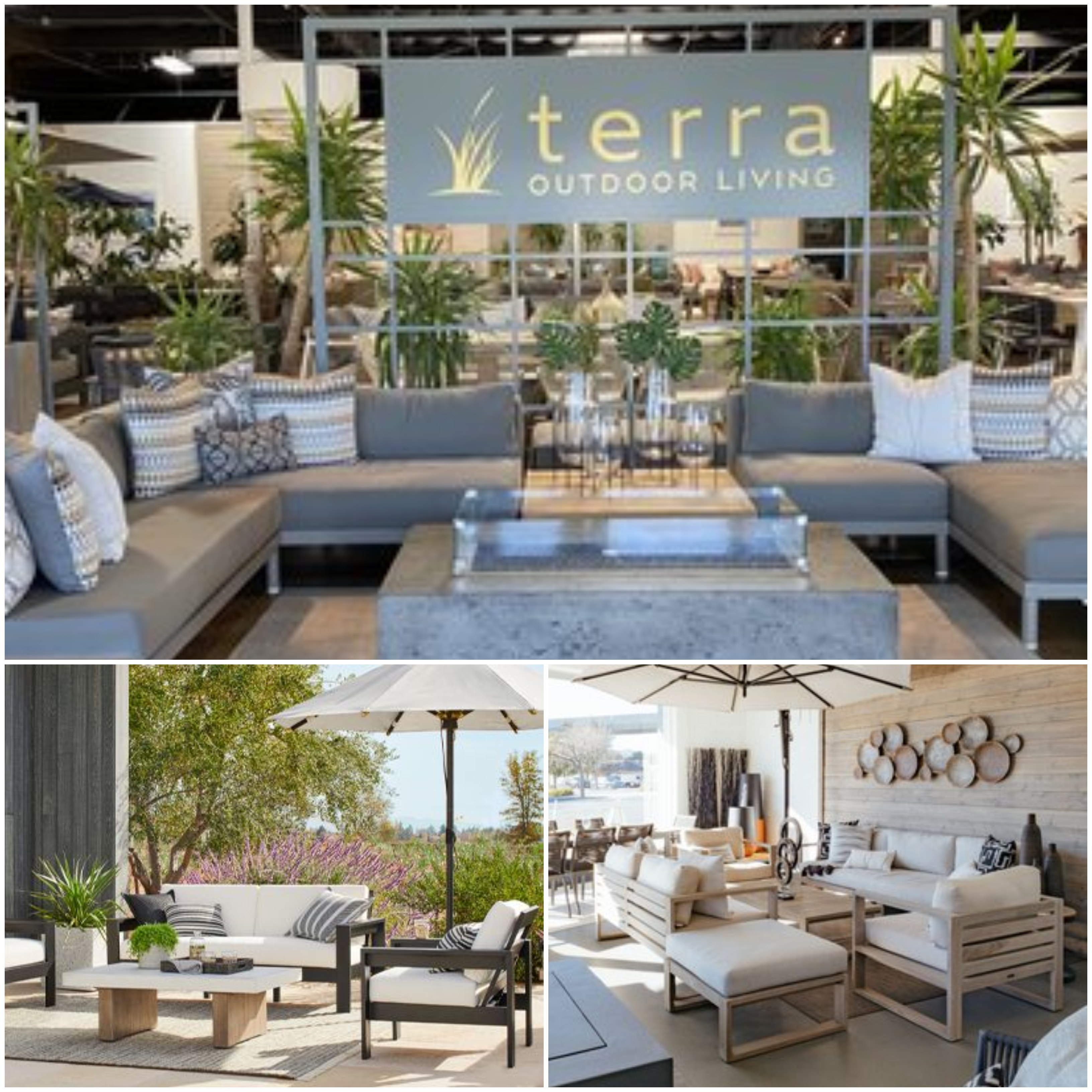Especially when it comes to our outdoor living spaces, it is more important than ever to adopt eco-friendly outdoor living practices in this fast-paced world where convenience frequently takes precedence over nature.
We no longer regard our yards as purely ornamental additions to our houses, but rather as essential parts of the greater ecosystem.
Eco-friendly yard practices provide a way to balance our outdoor lifestyles with the environment. We can lessen our influence on the environment and create lovely, useful areas for leisure and recreation by choosing carefully how to build and maintain our yards.
Let’s explore the world of eco-friendly outdoor living and examine some strategies and tactics to help you turn your yard into a sustainable haven.
Table of Contents
Eco-Friendly Outdoor Living
1. Select sustainable materials for landscaping projects
Selecting environmentally friendly materials for landscaping projects is necessary for minimizing their impact on the environment.
Select materials with low environmental impact, renewable sources, and responsible sourcing.
Get certifications for eco-friendly outdoor living like the Cradle to Cradle certification for overall sustainability or the Forest Stewardship Council (FSC) certification for wood products.

2. Eco-friendly options for decking, fencing, and outdoor furniture
- Decking
Look at composite decking, which is manufactured from recycled materials like plastic and wood fibers, as an alternative to conventional wood decking. Another environmentally friendly choice is bamboo decking, which grows quickly and can be replenished.
- Fencing
Look into fencing alternatives such as reclaimed wood, bamboo, or recycled plastic. These materials lessen the need for virgin resources while providing strength and aesthetic appeal.
- Outdoor Furniture
Seek for eco-friendly outdoor living furniture composed of sustainable materials that include hardwood with FSC certification, reclaimed wood, or recycled plastic.
These choices not only lessen their negative effects on the environment but also provide your outdoor area more personality.
3. Tips for the sustainability of outdoor materials
- Check certifications
Request certifications like GREENGUARD, FSC, or Cradle to Cradle to make sure the materials fulfill the strict sustainability requirements.
- Research suppliers
Select eco-friendly outdoor living material vendors who pledge to be transparent and sustainable in their sourcing and production procedures.
- Consider lifecycle
Look at the entire material lifecycle, from production to use to disposal, to determine the overall impact on the environment.
Water Conservation Techniques
1. Importance of water conservation in outdoor spaces
Water is a valuable resource, and preserving it in our eco-friendly outdoor living areas makes sense for economic and environmental reasons.
We can lessen the burden on nearby water supplies, save money on utility bills, and preserve ecosystems using less water.

2. Strategies for reducing water usage
- Xeriscaping
A landscaping method called xeriscaping seeks to lessen or completely do away with the requirement for additional watering. It involves selecting plants that can withstand drought, applying mulch to keep moisture in the soil, and planning landscapes to use as little water as possible.
- Drip Irrigation
By applying water directly to the roots of plants, drip irrigation reduces the amount of water lost to evaporation or runoff.
By using a targeted approach, resources are conserved and plants are given the water they require.
- Soil Amendment
Incorporate organic matter, like mulch or compost, to improve the quality of the soil. More efficient moisture retention in healthy soil lowers the requirement for frequent watering.
Read: DIY Home Security – Effective Measures You Can Implement Today
3. Tips for collecting and using rainwater in the yard
- Rain Barrels
To collect rainwater from gutters and downspouts, install rain barrels. Reducing the need for treated water, this collected rainwater can then be used to flush toilets, wash outdoor surfaces, and water plants.
- Rain Gardens
To collect and absorb rainwater runoff from your property, create rain gardens. These gardens are home to plenty of moist-loving plants that reduce erosion and remove pollutants from stormwater.
- Permeable Surfaces
For patios, walkways, and driveways, use waterproofing materials. By allowing rainwater to seep into the soil rather than into storm drains, these surfaces help to replenish groundwater supplies.
Native Plant Landscaping
1. Benefits of using native plants in landscaping
- Ecological Adaptation
Native plants need less water, fertilizer, and upkeep than non-native species because they are better suited to the local climate, soil, and wildlife.
- Biodiversity Support
For native wildlife, such as birds, insects, and pollinators, native plants provide food and habitat, promoting biodiversity and the health of ecosystems.
- Drought Resistance
Since many native plants are adapted to drought, they are excellent options for water-wise landscaping in arid climates.
2. How to choose native plants for your region?
- Research
Consult local gardening resources, native plant societies, or botanical gardens to identify native plant species that are native to your particular area.
- Consider Microclimates
When choosing native plants for your yard, consider its various microclimates, including sun exposure, soil composition, and moisture content.
- Visit Native Plant Nurseries
To find a wide variety of locally sourced native plants that are appropriate for the conditions in your area, visit native plant nurseries or garden centers.
3. Design tips for incorporating native plants
- Layering
Layer native plants, including groundcovers, shrubs, and trees, with different heights and growth habits to create visual interest and diversity in the environment for eco-friendly outdoor living.
- Grouping
To simulate natural plant communities and increase the impact of native plants in the landscape, arrange them in drifts or clusters.
- Seasonal Interest
A variety of native plants that provide year-round interest in the form of flowers, foliage, fruit, and seed heads should be chosen to give wildlife habitat and food sources all year long.
Composting and Organic Waste Management
Organic waste is converted into compost, a nutrient-rich soil amendment, through the natural process of composting.
Composting not only keeps organic waste out of landfills but also improves soil health and lowers greenhouse gas emissions.
Compost boosts soil structure, water retention, and nutrient levels by adding organic matter back into the soil, which eventually promotes biodiversity and healthier plant growth for eco-friendly outdoor living.
1. How to start and maintain a composting system in your yard?
- Choose a Location
For your compost pile or bin, choose a location in your yard that is partly shaded, well-drained, and both. Make certain it is simple to turn the compost and add materials.
- Build or Purchase a Bin
Build a compost bin out of wood pallets and wire mesh, or buy a prefabricated bin from a garden center. Verify that the bin is the right size for the needs of your home.
- Layering
Mix brown (rich in carbon) materials like dried leaves, straw, and shredded newspaper with green (rich in nitrogen) materials like leftover fruit and vegetable peels, grass clippings, and coffee grounds to start your compost pile.
- Maintain Balance
To encourage decomposition, keep the proportions of brown and green materials in your compost pile balanced. To promote eco-friendly outdoor living airflow and quicken the composting process, turn the pile frequently.
- Troubleshooting
To guarantee appropriate decomposition, keep the compost pile wet but not soggy and keep an eye on the temperature. Steer clear of adding meat, dairy, or greasy foods to keep pests and smells at bay.
Read: 20 Home Renovation Trends in the USA – What’s Hot Right Now?
2. Creative ways to reuse organic waste in landscaping
- Mulching
Mulch garden beds and trees with shredded leaves, grass clippings, or straw to keep moisture in the soil, prevent weed growth, and release organic nutrients into the soil as the mulch breaks down.
- Topdressing
For better soil fertility and structure without uprooting current plants, apply a thin layer of compost to garden beds and lawns for eco-friendly outdoor living.
- Compost Tea
Compost can be rooted in water to make compost tea, a nutrient-rich liquid fertilizer that can be used to hydrate plants and improve soil health.

Energy-Efficient Outdoor Lighting
Energy conservation, minimizing light pollution, and protecting natural habitats are all made possible by energy-efficient outdoor lighting.
We can reduce electricity costs, lessen our impact on the environment, and create a more sustainable outdoor environment by selecting energy-efficient lighting options.
Energy-efficienteco-friendly outdoor living lighting also contributes to increased security and safety, protecting the night sky’s beauty for animals that stay up and people as well.
1. Types of eco-friendly outdoor lighting
- LED Lights
LED (Light Emitting Diode) lights outlast conventional incandescent or halogen bulbs in terms of longevity and energy efficiency.
Because LED lights are available in a variety of colors and designs, they can be used for accent lighting as well as pathway lighting in outdoor lighting applications.
- Solar-Powered Lights
Solar-powered lights use the daytime sun to charge internal batteries, which subsequently provide light during the night.
These lights are an eco-friendly outdoor living choice for lighting outdoor areas because they are affordable, simple to install, and run without electricity.
- Low-Voltage Lighting
Low-voltage lighting systems use less energy than standard 120-volt lighting systems because they run on 12 volts of electricity.
These systems offer flexibility in design and placement for landscape lighting projects, and they are safer to install and operate for eco-friendly outdoor living.
2. Tips for reducing energy consumption
- Use Motion Sensors
Installing motion sensors or timers will help you save energy and extend the life of your outdoor lightbulbs by automatically turning them off when not in use.
- Optimize Placement
Place outdoor lights in a way that reduces skyglow, light trespass, and glare. Lights should be directed downward to reduce light pollution and concentrate light where it is needed.
- Choose Warm White Bulbs
For outdoor lighting, go for warm white (2700–3000 Kelvin) LED bulbs because they use less energy and produce a softer, more natural-looking light than cooler color temperatures.
Wildlife-Friendly Practices
1. Create habitats for wildlife in your yard
Native Plants
Include native plants in your landscaping to give nearby wildlife species food, cover, and places to build nests. To support a range of wildlife populations, choose a variety of plants with varying heights, textures, and blooming periods.
- Water Features
To provide birds and other wildlife access to drinking water and bathing areas, install a bird bath, pond, or small water feature. Make sure animal access to clean water sources is maintained.
- Shelter Structures
To the wildlife in your yard more cover and places to nest, add features like rock piles, birdhouses, and bat boxes.
2. Tips for attracting beneficial wildlife
- Pollinator Gardens
Plant flowers like milkweed, coneflowers, and lavender that draw bees, butterflies, and other pollinators. The health of the ecosystem and the production of food depend heavily on these pollinators.
- Provide Food
A range of bird species may be attracted to your yard by hanging bird feeders that are filled with seeds, nuts, or suet.
If you want to provide birds and other wildlife with natural food sources, think about planting fruit-bearing plants and trees during eco-friendly outdoor living ideas.
- Avoid Chemicals
Reduce the amount of pesticides, herbicides, and synthetic fertilizers you use in your yard because these substances can affect wildlife, birds, and beneficial insects. Choose eco-friendly and organic gardening techniques instead.
Read: Terra Outdoor Living – Transform Your Outdoor Oasis
3. How to minimize harm to wildlife?
- Safe Gardening Practices
When trimming, mowing, or pruning the vegetation in your yard, keep in mind the habitats and breeding grounds used by wildlife. During the breeding season, keep nests and nesting sites undisturbed.
- Prevent Wildlife Collisions
Put in bird-friendly screens or stickers on your windows to keep birds from hitting them. Apply reflective tape or stickers to glass surfaces to improve visibility and lower the chance of collisions.
- Pet Safety
When there is wildlife in your yard, keep pets inside or under supervision to avoid clashes and to ensure the safety of both animals and people.
Community Engagement and Education
1. Environmental Impact
Teaching people about eco-friendly outdoor living techniques promotes more sustainable behavior by increasing awareness of the effects that our daily decisions have on the environment.
2. Collective Action
We can encourage group action to address environmental issues and bring about positive change locally by involving the community in conversations about sustainable living.
3. Long-term Sustainability
Raising community awareness of eco-friendly outdoor living practices encourages a sustainable culture that has long-term positive effects on the environment, public health, and standard of living.
Bottom Line
The decisions we make as individuals can have a big influence on how well our world is doing.
By implementing sustainable eco-friendly outdoor living areas and encouraging others to follow suit, we can all contribute to reducing global warming, conserving biodiversity, and preserving the world’s natural beauty for future generations.
Read: The Psychology of Color in Interior Design – Color Your Mood











